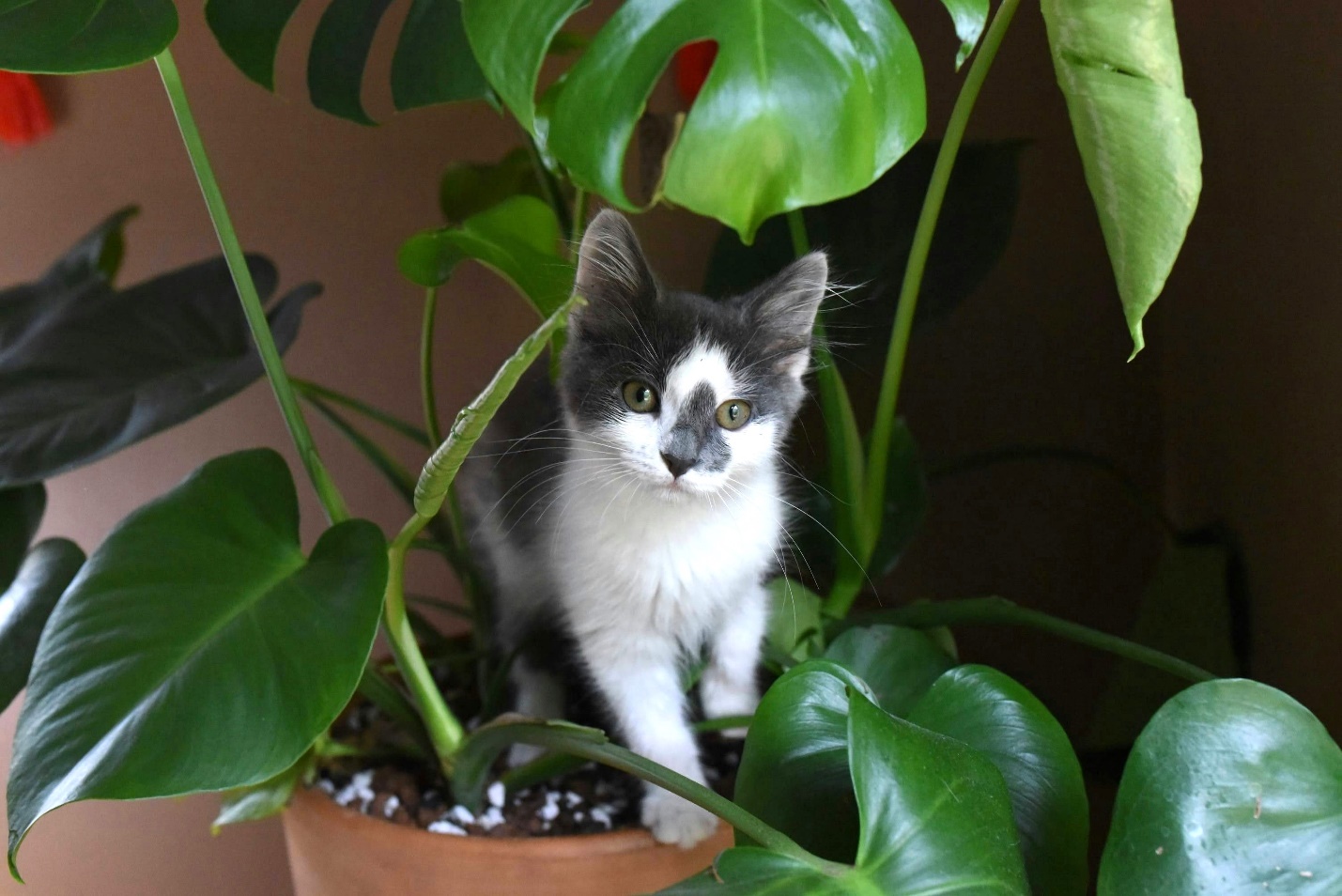In the world of interior design, there has been a recent push for a return to nature with shades of green, plant and floral patterns, and houseplants. Being surrounded by nature promotes a sense of calm and can bring some life to neutral décor.
However, cats and dogs can get into all sorts of trouble when you’re away, and it’s likely they’ll eventually set their sights on your houseplants. That’s why it’s important to make sure all the plants in your home are pet friendly and safe for them to ingest.
If you’re searching for the right non-toxic plants to match your aesthetic, take a look at the pictured list below for the perfect options.
Cat Palms and Parlor Palms
Palms are the most popular type of houseplant. They are elegant and can grow large enough to fill a whole corner of the room with lush greenery. They’re also easy to care for and thrive indoors with proper care. You won’t need to repot your palm for several years.
Not all palms are safe for your pets. The cat palm and parlor palms, in particular, are two non-toxic options that won’t endanger your pets.
Cat and parlor palms only need to be watered every 12 days if you live in a humid environment, or else watered just enough to keep the soil moist. It may be a good idea to set up a humidifier nearby or mist the fronds between watering, but be wary of creating too much moisture. They do well in indirect sunlight.
Orchids
If you’re looking for a flowering plant that’s safe for cats and dogs, an orchid is the perfect option. Their gorgeous blooms come in a wide variety of colors to accent your living space. They bloom in cycles of 8-12 months.
While orchids often get a bad rap for being hard to care for, if you know the proper steps to keep them happy and healthy, it’s actually quite easy to keep them alive. Since they are tropical plants, people often overwater them.
Orchids need a humid environment, but they only need to be watered when the soil mix is dry, or around once a week. We also recommend misting the leaves and blooms every once in a while during the summer. If you care for them properly, they can live happily indoors for up to 20 years.
Stromanthe Triostars
This houseplant is gaining popularity for its tropical and colorful appearance. Fortunately, it’s also perfectly safe for pets. Its white, red, and pink streaks can add a pop of unique color among other greenery.
For the most vibrant leaves, you’ll want to provide your stromanthe triostar with plenty of indirect sunlight and rotate it occasionally, since it will grow toward the light and develop more color this way.
This is another plant that enjoys a humid environment. It should only be watered when the top inch of the soil is dry, but you can also mist this plant to maintain humidity levels.
Autumn Ferns and Boston/Sword Ferns
Ferns are a classic choice for an indoor garden. Lush and full, they can add some interest to a minimalist space or liven up your neutrals.
Autumn ferns and Boston/sword ferns (pictured above) look similar, but new fronds of autumn ferns start out as a coppery red color before maturing into green. Both of these plants are pet-friendly.
Due to their adaptability to different humidity levels, soil types, and sunlight levels, these ferns are incredibly easy to care for. They don’t require much water, but they thrive best in soil that’s kept slightly moist. This means daily misting if you don’t live in a humid climate.
We recommend watering them once a week and keeping them out of direct sunlight, since they’re often located beneath canopy cover in their natural environment.
Bird’s Nest Ferns
Another pet-friendly fern option is the bird’s nest fern. With wavy leaves that resemble bird feathers, they’ll add a lovely touch of whimsy to your home.
Much like other ferns, they are ground-crawlers in nature and prefer indirect sunlight. Make sure not to overwater your fern and choose a pot with adequate drainage.
Bird’s nest ferns should only be watered every one or two weeks when the soil is dry. It’s also a good idea to mist the leaves from time to time.
Peperomia Obtusifolia or Baby Rubber Plants
If large, rounded leaves are more your style, peperomia obtusifolias (also called baby rubber plants) may be another great pet-friendly choice.
Baby rubber plants are another easy plant to care for and can live for up to 5-6 years indoors. They cannot handle too much direct sunlight and do best in bright rooms with indirect sunlight.
You can mist your peperomia, but again, be wary of overwatering. These plants should only be watered after their soil has fully dried out, or every 1-2 weeks. Contrary to common belief, yellow leaves may actually signify too much moisture, not dehydration.
Spider Plants
Spider plants have long, draping leaves with dark and light green stripes. Beyond being non-toxic for pets and boasting a full and sophisticated appearance, they are also one of the easiest indoor plants to care for.
Just like the others on this list, the spider plant only needs to be watered around once a week or however often you need to keep the soil slightly moist, but not damp. If you live in a dry environment, you can also mist your spider plant for a little extra humidity between watering.
We hope this list of plants that are safe for dogs and cats has been useful and wish you and your fluffy friend good luck finding the perfect new addition to your space!
Connect with local veterinarians in your area.



